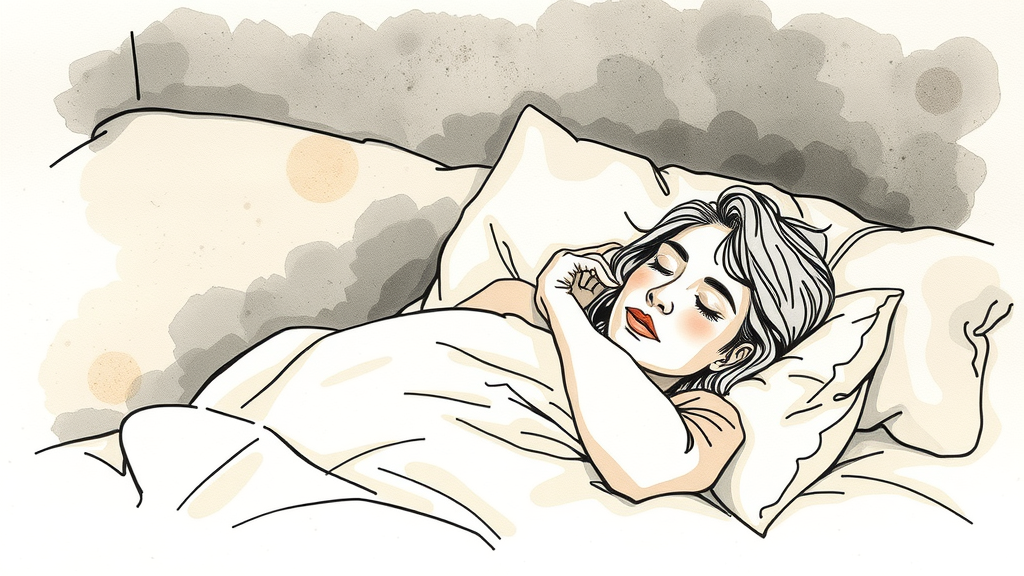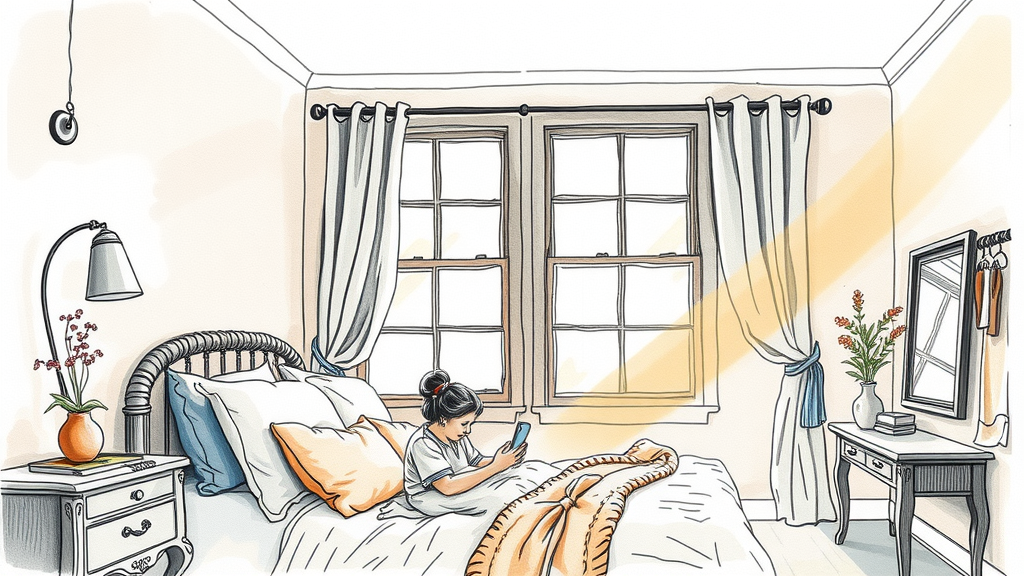· AI Assistant · Sleep Health · 9 min read
The Ultimate Guide to CBT-I Sleep Therapy for Perimenopause
Discover CBT-I, a drug-free sleep therapy, tailored for perimenopause. Reclaim restful nights and manage hormonal sleep disruptions naturally.
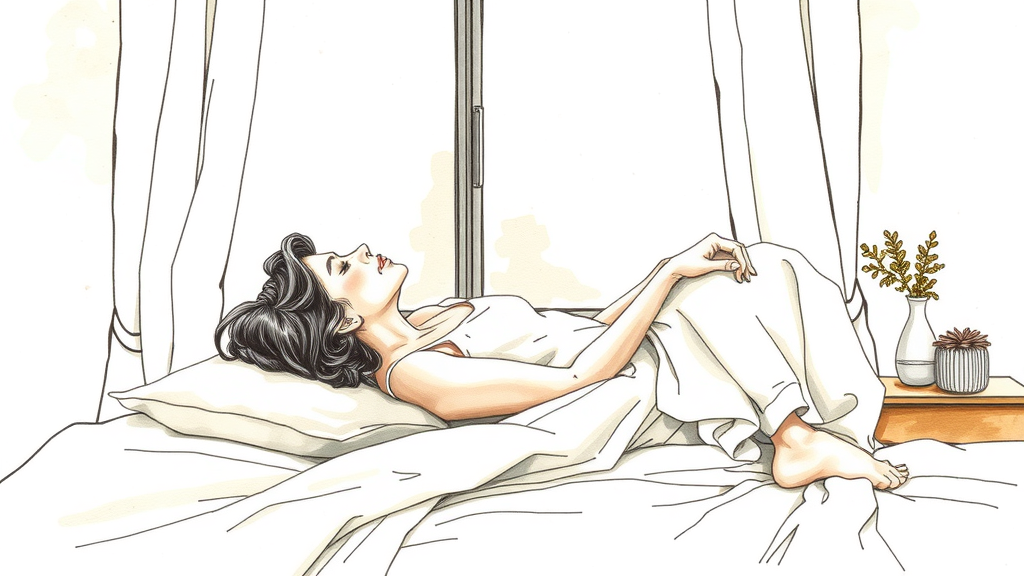
Understanding Perimenopause and Its Impact on Sleep
Perimenopause, the transitional phase leading up to menopause, often brings a whirlwind of hormonal changes that can profoundly disrupt a woman’s sleep. Fluctuating estrogen and progesterone levels can lead to night sweats, hot flashes, anxiety, mood swings, and restless leg syndrome – all common culprits behind frustrating nights of insomnia. Many women find themselves endlessly tossing and turning, leading to daytime fatigue, irritability, and decreased quality of life. While many treatments focus on hormone replacement therapy or pharmaceutical sleep aids, there’s a growing interest in holistic, sustainable solutions. This is where CBT-I, or Cognitive Behavioral Therapy for Insomnia, emerges as a powerful sleep therapy option, particularly appealing as a drug free sleep treatment. Its principles, while tailored here for perimenopause, offer broad benefits across various life stages marked by sleep challenges, even for new mothers looking to reclaim their sleep.
What is CBT-I? A Non-Drug Approach to Insomnia
Cognitive Behavioral Therapy for Insomnia (CBT-I) is a structured, evidence-based program that helps individuals overcome chronic sleep problems by addressing the thoughts, feelings, and behaviors that interfere with sleep. Unlike sleeping pills, which offer temporary relief, CBT-I focuses on equipping you with long-term strategies to improve your sleep quality and quantity. It’s considered the gold standard for insomnia treatment due to its high success rates and lasting benefits. For women navigating the complexities of perimenopause, cbti offers a tailored approach to tackle the specific sleep challenges that arise during this life stage.
Why CBT-I is Ideal for Perimenopausal Sleep Challenges
The perimenopausal transition often involves a delicate balance of bodily systems. Introducing new medications can sometimes add to existing complexities or come with unwanted side effects. This is why a drug free sleep treatment like cbti is particularly appealing.
- Addresses Root Causes:
CBT-Idoesn’t just mask symptoms; it helps identify and modify the underlying behavioral and cognitive patterns that contribute to insomnia, whether they are hormonal in origin or not. - Sustainable Results: The skills learned in
cbtiare lifelong tools. Once you master them, you have the power to manage future sleep disturbances without relying on medication. - No Side Effects: As a non-pharmacological approach,
cbtiavoids the side effects associated with sleep medications, such as grogginess, dependence, or withdrawal symptoms. This is a significant advantage for women who may already be experiencing other health changes. - Holistic Well-being: By improving sleep,
cbtican also positively impact mood, energy levels, cognitive function, and overall quality of life, which are often affected by perimenopausal symptoms. Its principles can also be very helpful for women who are trying to manage anxiety-induced insomnia, a common concern during this transitional period.
Key Components of CBT-I for Lasting Sleep Improvement
CBT-I is a multi-component sleep therapy that typically involves several strategies, often delivered over 4-8 sessions with a trained therapist. However, many core principles can be learned and applied independently.
1. Sleep Restriction Therapy (SRT)
This counter-intuitive technique involves temporarily limiting the time you spend in bed to the actual amount of time you are sleeping, even if it’s less than you’d like. The goal is to build up a strong “sleep drive” and increase sleep efficiency (the proportion of time you spend asleep while in bed). As your sleep consolidates and improves, your time in bed is gradually extended. This helps retrain your body to associate your bed with sleep, not wakefulness or frustration.
2. Stimulus Control Therapy (SCT)
Stimulus control aims to break the negative associations you might have developed with your bed and bedroom. It involves establishing a strict routine to ensure your bed becomes a strong cue for sleep.
- Go to bed only when sleepy.
- Use your bed only for sleep and sex. Avoid reading, watching TV, eating, or working in bed.
- If you can’t sleep within 20 minutes, get out of bed and do a quiet, non-stimulating activity in another room until you feel sleepy, then return to bed.
- Wake up at the same time every day, regardless of how much you slept, even on weekends.
- Avoid napping, or limit them to very short, early afternoon naps if absolutely necessary.
3. Cognitive Restructuring
This component of CBT-I addresses the thought patterns that contribute to insomnia. During perimenopause, anxiety about sleep can become a self-fulfilling prophecy. Cognitive restructuring helps you identify and challenge unhelpful thoughts (e.g., “I’ll never sleep again,” “I can’t function without 8 hours”) and replace them with more realistic and helpful ones. This might involve:
- Recognizing the impact of hormonal fluctuations but not letting them completely dictate your sleep outlook.
- Challenging exaggerated fears about sleep loss.
- Learning to tolerate temporary discomfort without panic.
- Developing coping statements for nights when sleep is difficult.
4. Sleep Hygiene Education
While often the first thing people think of when addressing sleep issues, sleep hygiene is just one piece of the CBT-I puzzle. It involves practices that promote good sleep habits.
- Maintain a consistent sleep schedule.
- Create a comfortable sleep environment (dark, quiet, cool).
- Avoid caffeine and heavy meals close to bedtime.
- Limit alcohol and nicotine, especially in the evening.
- Engage in regular physical activity, but not too close to bedtime.
- Establish a relaxing pre-sleep routine.
It’s important to note that while good sleep hygiene is beneficial, it’s often not enough on its own to cure chronic insomnia, especially when hormonal factors are at play.
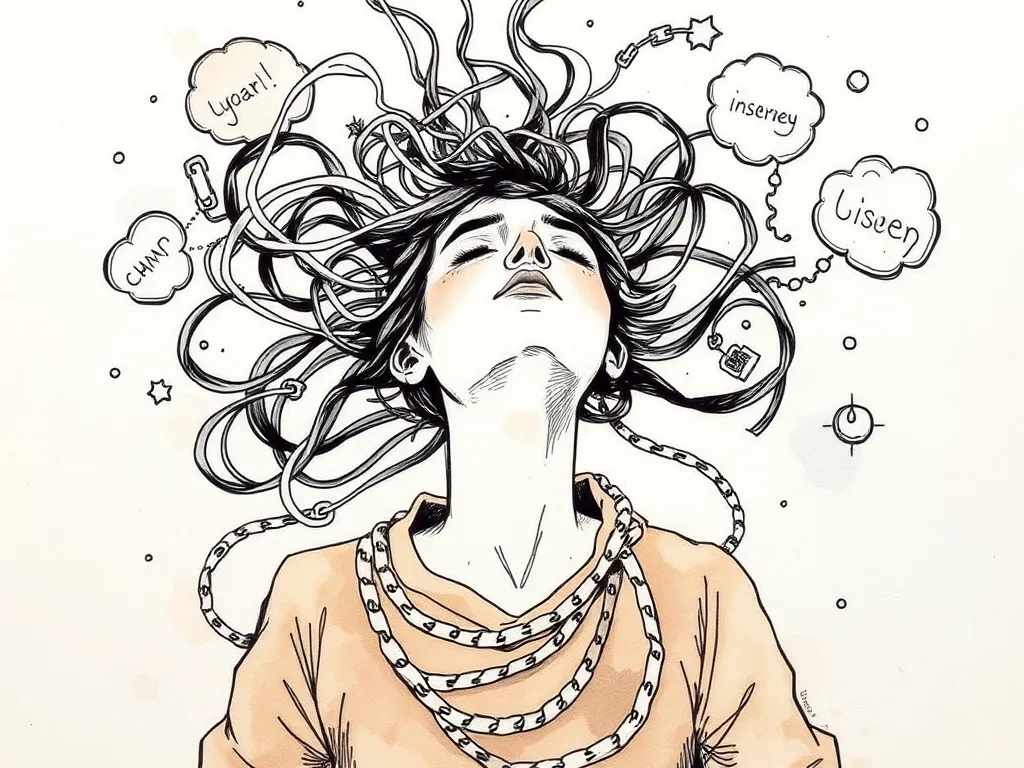
5. Relapse Prevention
The final component of CBT-I equips you with strategies to maintain your improved sleep and manage future sleep disruptions. Perimenopause is a fluctuating journey, and there might be times when symptoms flare up. Relapse prevention helps you recognize early warning signs of sleep problems and apply the cbti skills you’ve learned to prevent a full return of insomnia. This proactive approach ensures the long-term effectiveness of this sleep therapy. The strategies learned here can also be beneficial for broader sleep challenges, for example, helping seniors maintain healthy sleep patterns as they age.
Implementing CBT-I During Perimenopause: Tailoring Strategies
Applying CBT-I principles during perimenopause requires understanding that hormonal changes are a significant factor. While cbti cannot stop hot flashes, it can teach you how to respond to them without letting them completely derail your sleep.
- Address Hot Flashes: Keep the bedroom cool, wear lightweight sleepwear, and have cooling aids (fan, cold water) readily available. If a hot flash wakes you, apply stimulus control: get out of bed until the sensation passes and you feel sleepy again.
- Manage Anxiety & Mood Swings: Utilize cognitive restructuring to challenge anxious thoughts about sleep or the perimenopausal transition itself. Incorporate relaxation techniques like deep breathing or meditation into your pre-sleep routine.
- Consistency is Key: Given the unpredictable nature of perimenopausal symptoms, maintaining a consistent sleep schedule and routine is even more crucial. This stability provides an anchor for your body’s natural sleep-wake cycle.
- Patience and Persistence:
CBT-Iis not an overnight fix. It requires commitment and patience, especially during a time of significant physiological change. Celebrate small victories and remember that progress often isn’t linear. - Consider a Combined Approach: While
cbtiis a fantastic drug free sleep treatment, it can also complement other perimenopausal management strategies, including dietary changes, exercise, and, if appropriate and discussed with your doctor, hormone therapy.
Finding Support: Therapists and Resources
While some CBT-I principles can be self-taught, working with a trained CBT-I therapist can significantly enhance your success, especially when dealing with the unique challenges of perimenopause. A therapist can:
- Provide personalized guidance and adjust the protocol to your specific needs.
- Help you identify and challenge deeply ingrained negative thought patterns.
- Offer accountability and encouragement.
- Distinguish between perimenopausal sleep disruptions and other underlying medical conditions.
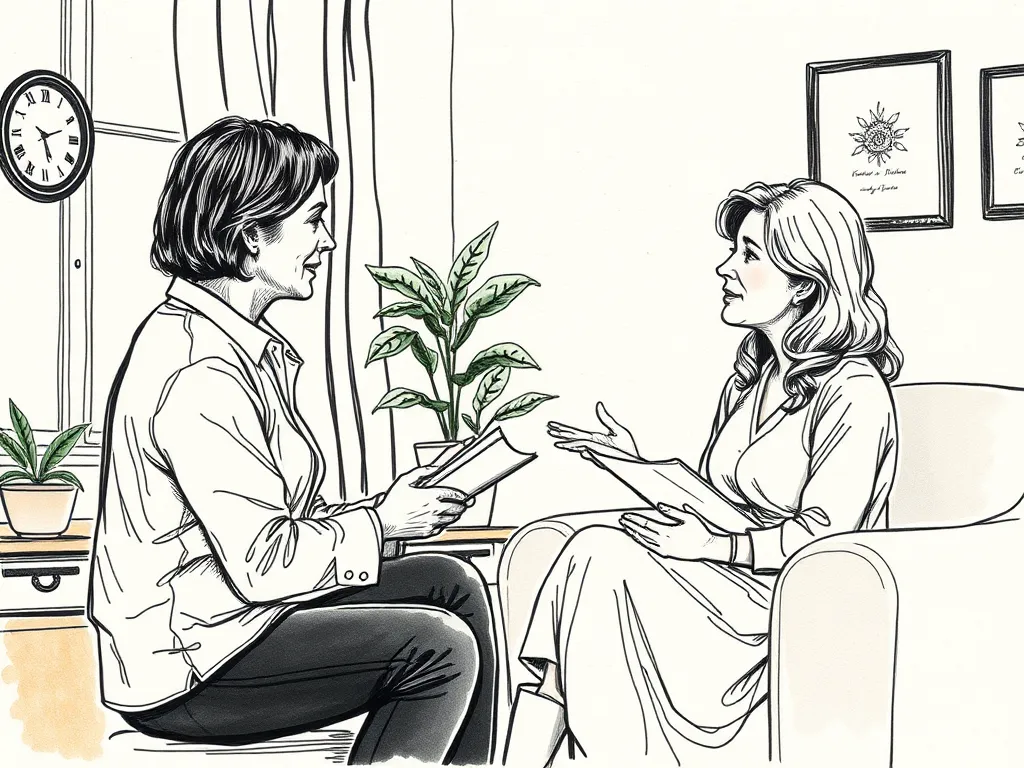
You can find qualified CBT-I therapists through professional organizations specializing in sleep medicine or behavioral health. There are also digital CBT-I programs and apps that offer structured guidance, providing an accessible alternative for many.
Reclaiming Rest: Your Journey to Better Sleep
Perimenopause can indeed be a challenging phase, and sleep disturbances are among its most frustrating symptoms. However, with CBT-I, you have a powerful, drug free sleep treatment at your disposal. This sleep therapy empowers you to understand and manage your sleep, rather than being a passive victim of hormonal shifts. By embracing its principles – from establishing strict sleep habits to reshaping unhelpful thoughts – you can significantly improve your sleep quality and regain the restful nights you deserve. Remember, investing in your sleep during perimenopause is investing in your overall well-being. This cbti approach can provide invaluable tools, just as it has for women navigating the unique sleep challenges of menopause.
Frequently Asked Questions About CBT-I for Perimenopause
Q1: How long does it take for CBT-I to work for perimenopausal insomnia?
A1: The timeline varies, but many individuals start noticing improvements within 4-6 weeks of consistent application of CBT-I techniques. Full benefits may take 8-12 weeks or longer, especially when navigating the hormonal fluctuations of perimenopause. Consistency and adherence to the program are key.
Q2: Can CBT-I help with night sweats and hot flashes during perimenopause?
A2: While CBT-I does not directly stop night sweats or hot flashes (which are physiological responses to hormonal changes), it teaches you how to cope with them so they don’t completely disrupt your sleep. By breaking the association between waking up from a hot flash and subsequent anxiety about not being able to fall back asleep, CBT-I helps you return to sleep more quickly and effectively.
Q3: Is CBT-I a permanent solution, or will I need ongoing therapy?
A3: CBT-I equips you with lifelong skills to manage your sleep. Once you complete a course of sleep therapy, you should have the tools to independently maintain good sleep and address future sleep disturbances. While some may benefit from occasional “booster” sessions, it is designed to be a permanent solution for chronic insomnia.
Q4: Can I do CBT-I on my own, or do I need a therapist?
A4: While self-help CBT-I resources (books, apps) are available and can be effective for some, working with a trained CBT-I therapist is generally recommended, especially for persistent or complex insomnia, or when dealing with fluctuating perimenopausal symptoms. A therapist can provide personalized guidance, adjust strategies, and offer support and accountability.
Q5: Will CBT-I interfere with other perimenopause treatments I’m undergoing?
A5: No, CBT-I is a behavioral sleep therapy and is non-pharmacological, meaning it does not interfere with hormone therapy, other medications, or complementary treatments for perimenopause. In fact, it can often complement these approaches by addressing the behavioral and cognitive aspects of sleep that medications alone cannot. Always consult with your healthcare provider about all treatments you are considering.
Assess Your Sleep Quality Today
Take our My Sleep Health Score assessment to get personalized insights about your sleep patterns and discover how CBT-I can help you achieve better sleep.

Don Schmidt
15+ years of experience in sleep therapy and Cognitive Behavioral Therapy for Insomnia (CBT-I). Passionate about connecting individuals struggling with sleep disorders to evidence-based, non-medical treatment solutions. Author of hundreds of articles and comprehensive guides on sleep health, CBT-I techniques, and overcoming insomnia. When not helping clients achieve better sleep, you can find me hiking with my family and dogs or enjoying a good book.
Ready to connect with a provider?
Allow us to connect you with a provider who can help.

